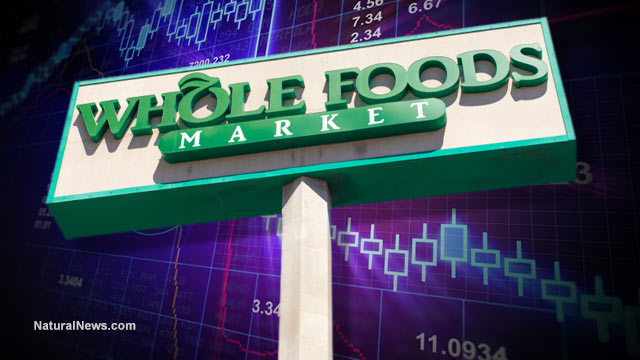Shelves stripped bare at Whole Foods stores across America as supply chain logistics crater
01/22/2018 / By Cassie B.

Imagine going to your local grocery store and being greeted by empty shelves, with item after item on your shopping list nowhere to be found. That might be par for the course if you live in Venezuela, but well-stocked stores are something that most Americans take for granted, particularly those who shop in upscale stores. Now, however, Whole Foods shoppers are complaining about some serious stocking issues in their local stores, and the problem doesn’t show any signs of letting up soon.
In recent months, Barclays analysts who have visited the chain’s stores have found shelves and displays that were completely empty, along with hot food bars and produce that look like they are deteriorating. In the firm’s published research notes, they said every department of one store they visited had ”high” out-of-stock issues in both branded and private-label items. An East Coast store, meanwhile, had “extraordinary” inventory problems. Basics like bananas and eggs were completely unavailable or very low in stock, while entire displays, end caps, and refrigerated cases were empty.
You might be tempted to think this is a good thing because there must be higher shopper traffic, but on the other side of the coin, it’s a lot of lost sales for the company – not to mention frustrated shoppers.
Making matters worse for those who are drawn to Whole Foods’ produce is the fact that the analysts reported the produce has deteriorated in both quality and size, something they say customers have also been reporting.
One employee at a Texas Whole Foods store said the out-of-stock problems reached a “horrible” level over the holidays and that their produce department was “embarrassing.” He told Business Insider that he wanted to remain anonymous because he feared losing his job – a realistic concern if the tales of the way people who work for Whole Foods owner Amazon are treated are anything to go by.
Is Amazon helping or hurting Whole Foods?
Indeed, ever since Amazon acquired Whole Foods for $13.7 billion last August, the store seems to have gone downhill. While the prices on some foods, like avocados and bananas, went down, those products have been rotting more quickly than they once did. Shoppers have started complaining about tasteless, rotten and discolored produce in stores across the nation, while products that used to be consistently well-stocked were now regularly unavailable. Many have switched grocery stores in response.
In addition, non-organic items have been given prominent displays at the store since the Amazon takeover, including foods like HP Sauce and Tropicana Orange Juice, prompting some to fear that the store is being “conventionalized.”
Some angry shoppers went to Twitter to voice their frustration, with one person saying the Tenleytown outlet looked like “the Soviet Safeway.” A Brooklyn commenter said that the empty bread shelves in the store made it “seem like people are preparing for the apocalypse.”
Employees have said that the chain’s order-to-shelf (OTS) inventory system is to blame for the shortages because its controls are so tight. One manager said that his store was constantly running out of items in every department, and that the managers’ hands are essentially tied. While less food is going bad in storage rooms, workers have described OTS as being a “militaristic” and morale-crushing system that causes items to go out of stock quickly.
There are plenty of reasons to criticize Amazon, but even their biggest detractors can usually admit that they set the bar when it comes to logistics. That’s why it’s so perplexing to see their Whole Foods stores experiencing such dramatic supply issues. The good news is that the empty shelves are actually a win for consumers because it saves them from buying unlabeled GMOs and foods laden with toxic pesticides and heavy metals.
Sources include:
Tagged Under: Amazon, food freedom, food supply, groceries, grocery stores, logistics, produce, Retail, supermarkets, supply chain, Whole Foods
RECENT NEWS & ARTICLES
COPYRIGHT © 2017 WHOLE FOODS NEWS





















